One of the many gifts of the midcentury was developing the American interstate system. In 1956, the Federal Aid Highway Act set in motion the development of interstates across the country, making transportation of goods and of travel much more feasible–and making the growth and desirability of suburbs possible. The interstates quickly gave rise to the need for rest stops, many of which were also built in the midcentury. (Yes, queuing up “Get Your Kicks on Route 66” is totally warranted right now.)
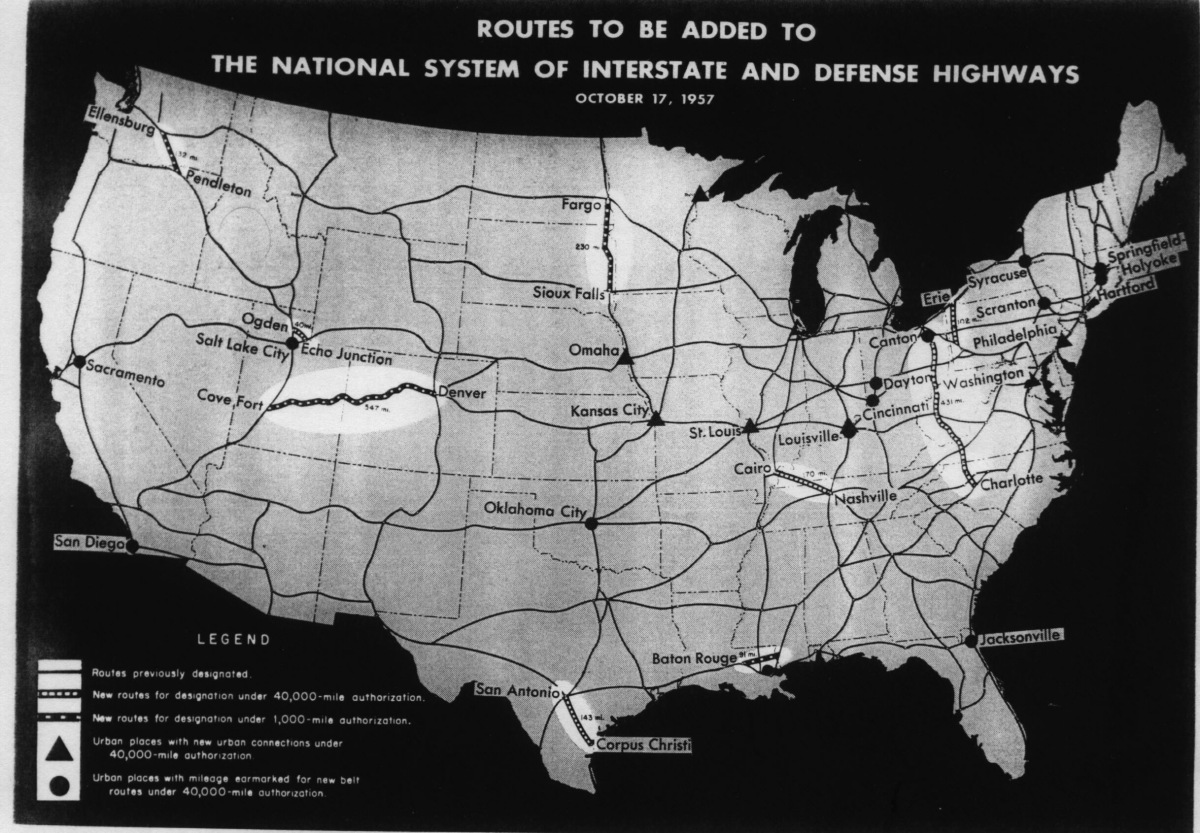
A Photographer’s Journey
Originally from California, photographer Ryann Ford is a fan of Atomic Ranch and Midcentury Modern architecture and design. In fact, when she was living in California, she always went to Palm Spring’s Modernism week. Taking those influences with her, she moved to Austin, Texas in 2007, where she began her freelance photography career. En route to various shoot locations in Texas, her affinity for Midcentury Modern drew her to rest stops she saw in her travels. Attracted to their minimalism and uniqueness, she began to think the rest stops would make for a great photo series.
“In 2008, in what was probably the worst part of the recession, I started to look if other photographers had done something similar,” Ryann recalls, “but instead I kept finding article after article on closed or demolished stops.” Faced with the recession, some states chose to cut costs by temporarily closing or altogether demolishing their roadside rest stops.
For Ryann, this made the project of photographing rest stops more important to document and bring attention to these forgotten midcentury beauties. Over the next seven years, Ryann captured hundreds of these rest stops, mostly in the American South and Southwest, for a 176-page book called The Last Stop: Vanishing Rest Stops of the American Roadside.
Sunrise Stop near Justiceburg, Texas
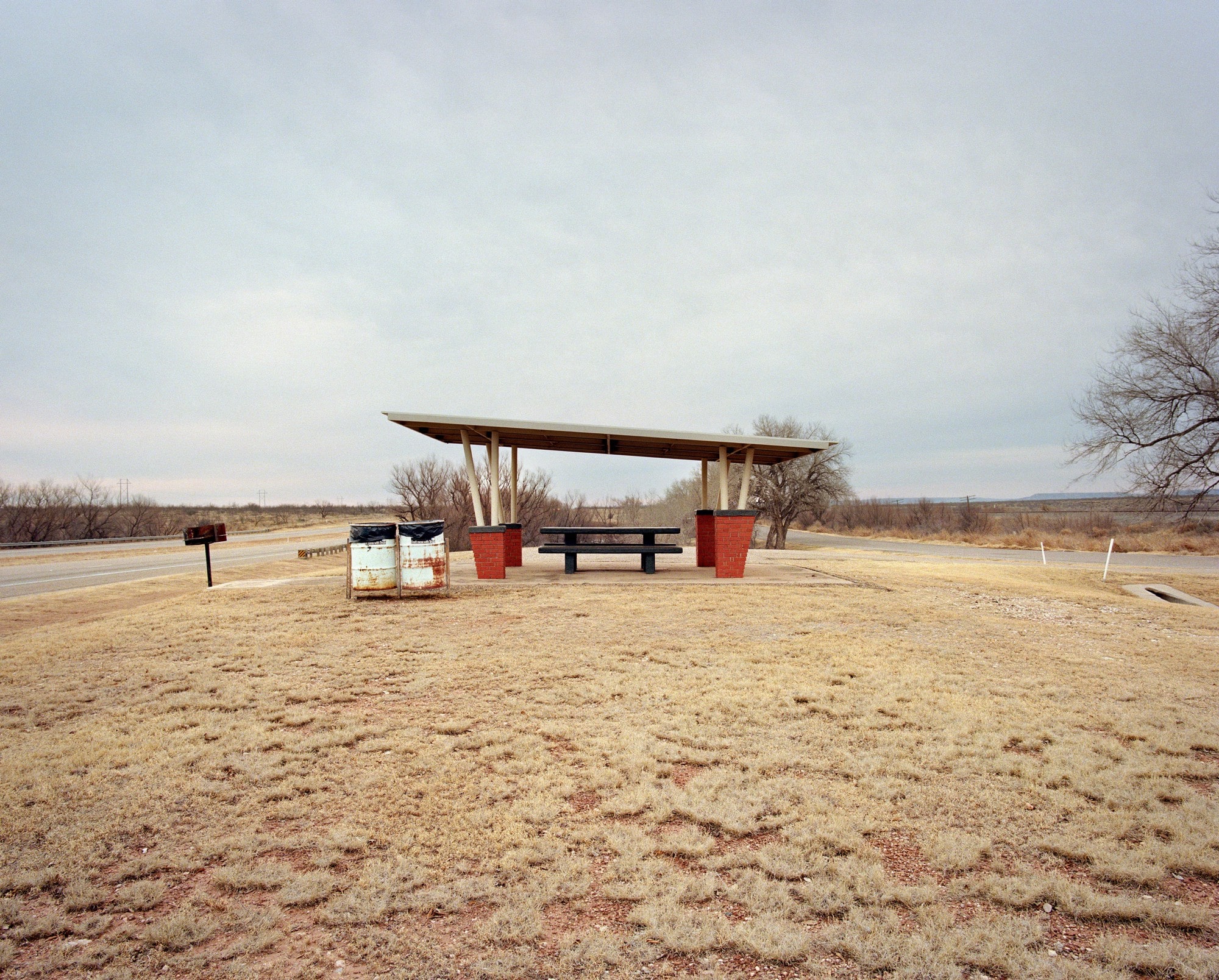
While the majority of stops Ryann captured came from road trips expressly for the purpose of photographing rest stops along the way, this one came serendipitously. Driving to her parents’ home in Pagosa Springs, Colorado from Austin for Christmas, this rest stop struck her in the early morning just before sunrise. Ryann remembers, “It was really cold and really desolate. I saw it and just thought ‘Wow, look at that. That’s beautiful’–with just the really flat light, the sun was just coming up through the fog, and there were truckers still sleeping in their trucks just out of frame.”
Ryann says this stop is one of her favorites from the project. “It’s a great example of midcentury architecture, even though it’s not a dramatic example, you can still tell it’s from the midcentury.”
Abandoned in the Oaks near Thackerville, Okla.
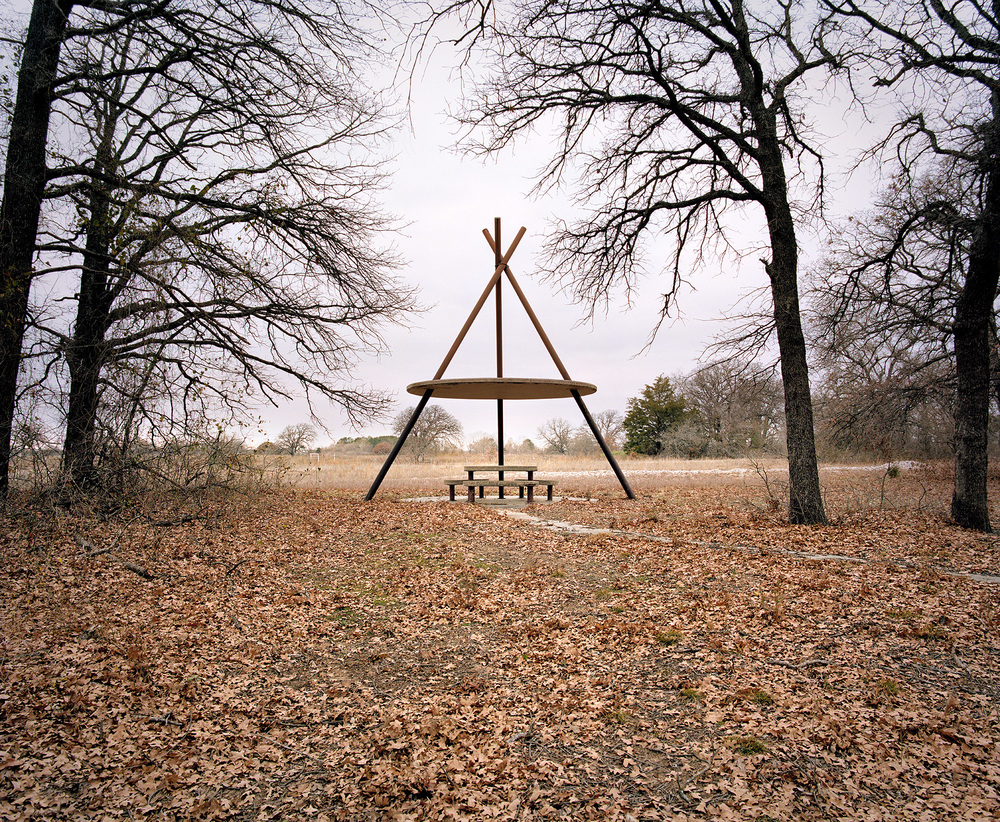
Ryann says this stop was one of her top five favorites of the project. It’s an example of the regional flair several states incorporated into their rest stop designs to give motorists a sense of place. “Not a lot of states did this, but the ones that did did it very well.” This is partially why Ryann kept returning to stops in the South/Southwest, because states like Oklahoma, Texas and New Mexico incorporated regional elements into their rest stops’ designs. This one in Oklahoma has a midcentury minimalist take on the teepee.
This stop is also an example of an abandoned rest area. It isn’t operating but still sits just off the freeway tucked into the oaks. When she came here, Ryann found fallen oaks braced up against the teepee shelters. The desolation of just a sheltered picnic table on a field of fallen leaves and bare oaks was so stark and beautiful, and a perfect opportunity for photography. Ryann loved shooting in the solitude of this scene.
Ryann worked with Joanna Dowling on the preface setting the historical context of rest stops, and for more information on the history of rest stops, visit restareahistory.org. For more of Ryann’s gorgeous roadside photography, visit The Last Stop.

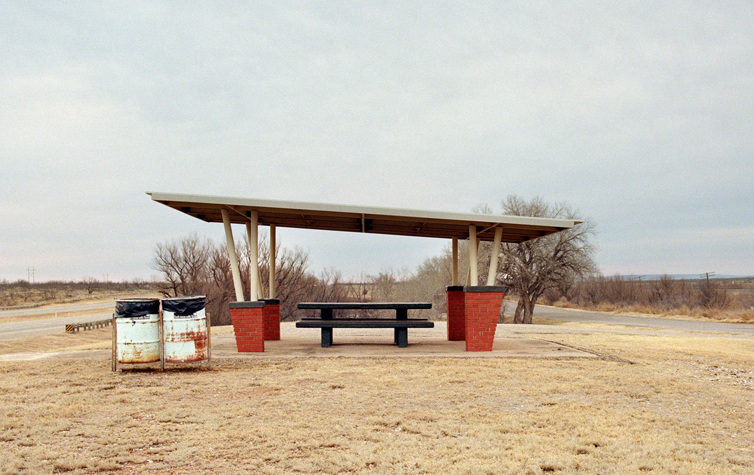
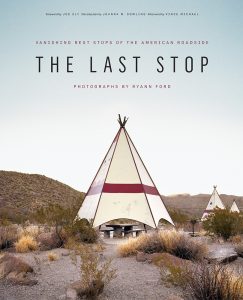











1 comment